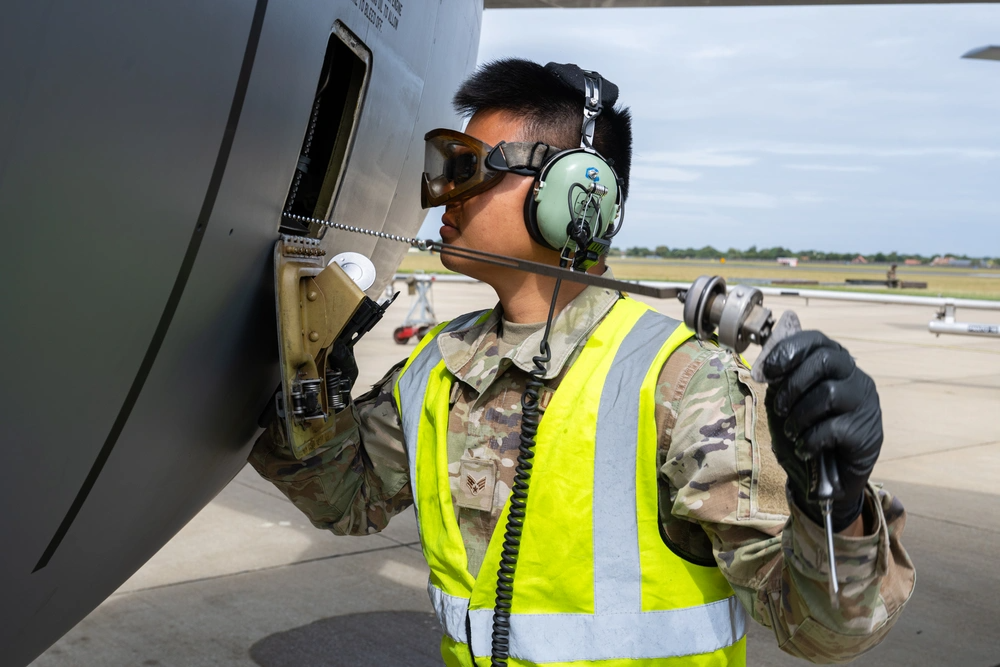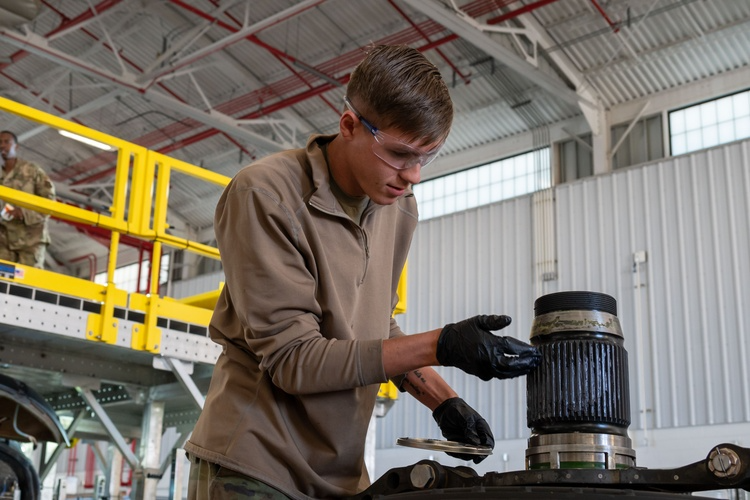Whether an old airframe is on the edge of retirement or a brand-new jet, a robust logistics chain, and parts supply are paramount.
Greenwood Aerospace is your leader in government procurement, aircraft and parts storage and distribution, and military and defense contracting. Our expertise and services include the following:
Procurement of
- Fixed-wing aircraft and associated support
- Aircraft parts & accessories
- Military aircraft parts
- Storage and distribution of parts and supplies to your organization. We will operate as your private warehouse and distribution network.
This is only a sample of our services and capabilities.
Learn more about our services for the defense and military industries. For additional information, you can also contact us here or by emailing sales@governmentprocurement.com.
The military aviation mission requires enormous logistical support to function properly. It is easy to look at as a simple, self-contained unit, mainly because that is how the military structures its flying missions. The idea is to take a package of aircraft and drop them anywhere in the world on short notice.
But theory and practice are two different things. Not every part of the military flying mission can be conducted in-house; there are too many different moving pieces to handle without external assistance. The contractor logistics process is where these loose ends are tied up.
What Is The CLS Mission?
So what is the contractor logistics support mission?
That always depends on the scope of the contract more than anything. No two contractors are the same; the devil is in the details, as they say. The specifics of the CLS depend entirely on the end user's needs. It can be as narrow or as wide a scope as is defined for the mission. But the one thing that is consistent about contractor logistics is that it is the logistics and maintenance support, or really any services deemed necessary, to sustain a specified weapon system over a period of time, or indefinitely if that is what the contract stipulates.
That’s great, but what does it actually mean? As in, how does it look for the end user?
One great example was when the KC-135 weapon system underwent an auxiliary power unit (APU) upgrade several years back. Large-scale projects like this are never conducted by in-house uniform personnel because the demands and logistics are extensive. Instead, the project is farmed out to a CLS for repair and modification. The project scope was clearly defined (original APU replaced with new APU, plus all of the necessary airframe and systems modifications), along with a timetable and logistical requirements.

Ensuring Mission Readiness
How does the CLS process ensure mission readiness? Because it is a google to not only keep aircraft in good condition but to modify and upgrade weapon systems, bolstering them for future conflicts and sustaining these airframes to be reliable well into the future. This is how the U.S. continues to operate aging airframes with excellent mission capability rates despite their age. Regardless of the mission, all airframes require huge amounts of upkeep to remain reliable, but they must also be updated to remain viable. CLS supports both of these.
Contractor Logistics Support Offers What Services And Resources?
Again, this varies from mission to mission, and no two missions of CLS are the same. Each contract goes through an extensive vetting and approval process so that the entire scope of the mission and operations is captured.
But generally speaking, CLS can be used for a few different purposes.
- It can be used to fill all logistics for a given project on an “as-needed” basis.
- For the initial fielding of a new weapon system until permanent logistics solutions are in place.
- Other services as defined by weapon systems managers.

Contractor Logistics supports what Types Of Products?
There is no exhaustive or comprehensive list of products that use CLS, but among the most common are fixed and rotary wing support, avionics upgrades, and especially any communications systems or technical systems which require frequent updating to remain cutting edge.
Avionics Systems
If you follow military aviation at all, especially block upgrades, you will notice that most of the upgrades are centered around avionics or engines. Considering the speed of technological advancement in the tech world, this should be no surprise. Also, tactical assets in the U.S. military aviation inventory must still remain compliant with the National Airspace System (NAS). Avionics upgrades are among the most common block upgrades on weapon systems because they dictate the aircraft’s capabilities. An airplane that cannot legally operate in the NAS is nothing more than a paperweight, so the military must plan accordingly and in concert with the FAA and with ICAO to ensure its aircraft can legally operate.
Fixed Wing Assets
While there are thousands of helicopters in the military, there are many more fixed-wing assets. The Air Force operates a fleet of around 2,500 airplanes, and the Army has several hundred. All of these, regardless of the mission set, require constant upkeep. They are also all vying for much-needed dollars for upgrades to remain relevant well into the 21st century. Of course, those that are not will be retired; if the juice is no longer worth the squeeze to keep them, they will be retired, and some will be sold as part of the FMS program. Some fixed-wing assets, namely the training fleet and part of the special air mission/VIP fleet, are maintained entirely by contract services. Maintaining these non-tactical aircraft using contract support is more cost-effective than uniformed personnel. But CLS takes many forms; tactical aircraft routinely require CLS for structural repairs, powerplant upgrades (or replacements), and other systems upgrades.
Some of the more noteworthy examples are the C-130H upgrades. The original paddle props on the Hotel model Hercs were well known to shake the occupants to pieces. But it turned out it was also shaking the wing box to pieces. As a result, the wing boxes have been repaired, and propellors upgraded to J-model style 6-blade props.

Rotary Wing Assets
Helicopters are notorious for airframe structural and rotor system failures. While helicopters are overwhelmingly reliable, they are still extremely complex machines both in upkeep and in operation. By design, they are exposed to extremely high vibration all the time. Helicopter upkeep is imperative for the continued health of the airframe. Mechanical failures can lead to disastrous consequences, although skilled pilots can still walk away from dire situations. Routine maintenance is the key to a reliable and safe helicopter fleet, but what happens when a known deficiency is identified? Depending on the scope of the problem, it may warrant a CLS for repair and upkeep.

Parting Thoughts
Matching up with the right contractor with your demand can be a struggle sometimes. Government Procurement is your best ally when you need support but don’t have the inroads to do it. That’s where we can help. Whether it is finding the right contractor or setting up a reliable supply chain, Government Procurement is with you every step of the way. If you aren’t sure where to start, give us a call, and we’ll talk to you about your needs and the project's scope!


.svg)





